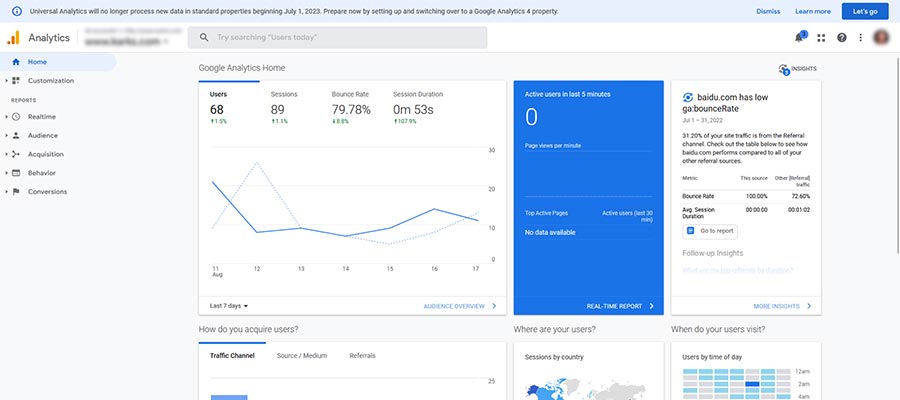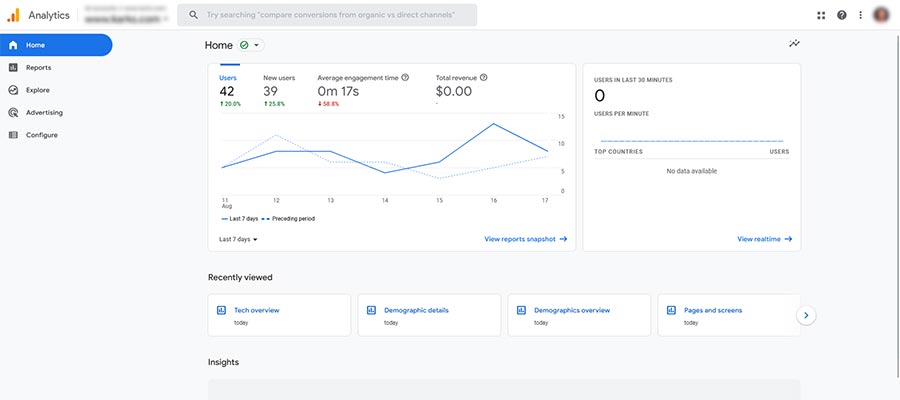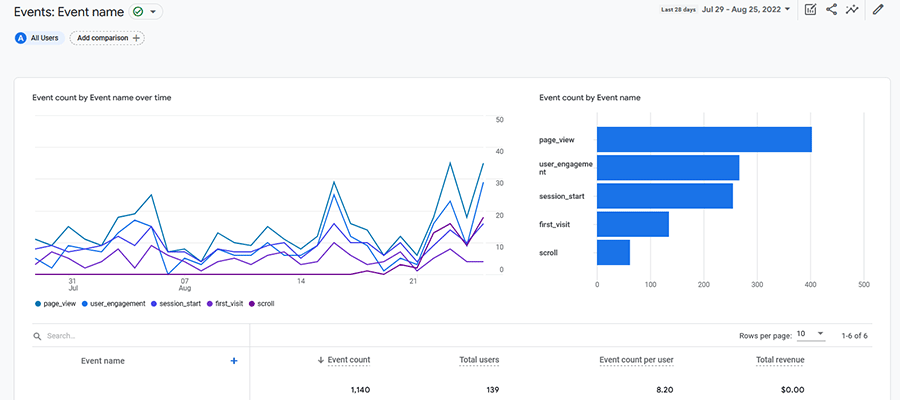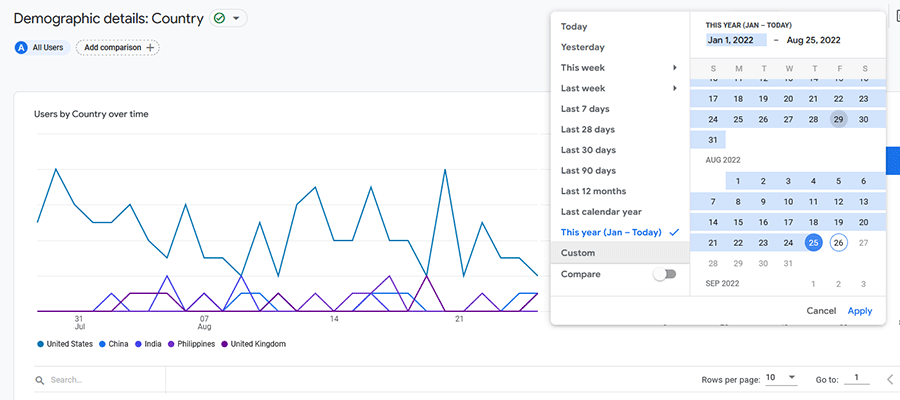Taking a Look at Google Analytics 4
Google Analytics has been a staple in the toolbox of web designers, marketers, and SEO specialists for years. And although there’s a steep learning curve, it offers an in-depth view of who’s visiting your website and the actions they take.
The massive piles of data Google Analytics provide hasn’t necessarily kept up with an evolving web, however. Privacy regulations and competitors with leaner products have forced the venerable tool to reconsider its practices.
That’s why the next version is likely to surprise some longtime users. Google Analytics 4 (GA4) takes a vastly different approach, with a focus on user events rather than sessions. This eliminates some privacy concerns – not to mention user-specific data that was of interest to those of us reading the reports.
And it’s also going to require action on our part. Google Analytics 4 is not compatible with the previous Universal Analytics (UA) functionality. That means you’ll have to set up your site to be a GA4 property, then implement tracking. UA is set to be retired on July 1, 2023, and data will only be available for a short period afterward.
Indeed, things will be different. But not to worry! With the help of an expert, we’ve put together a list of things you’ll need to know about the switch to Google Analytics 4.
Making a Slow Transition to Google Analytics 4
If you manage Google Analytics for your clients, you’ll need to transition them to GA4 at some point. But you don’t have to go all in right away.
It’s possible to run GA4 alongside legacy UA tracking. This allows you to compare and contrast the available reports. And it also ensures that you’ll hit the ground running when UA is officially retired.
The first step is to create a GA4 version of your existing property. Google has a handy guide that outlines the steps. Once you’ve established the GA4 property, you’ll need to implement its tracking code on your website.
As with previous incarnations, it may take up to 48 hours to see data populate into the GA4 dashboard. And the visual differences between versions are apparent, if not stark.

Google Analytics (UA version) Dashboard

Google Analytics 4 Dashboard
What’s Different about GA4?
“The changing scope and schemas. It will be in line with other product-focused analytics marketing such as Mixpanel, Segment, etc.” That’s how analytics manager and software engineer Victor Ramirez describes the renewed focus of Google Analytics 4.
While UA has traditionally given us a “User > Session > Hits” view of data, GA4 will simply be “Users and Events,” Ramirez says. This pares down the information available in reports, but that’s not necessarily a bad thing.
In the long run, Ramirez thinks GA4 will end up being more useful to stakeholders. That’s in part because the old UA reports are an apples-to-oranges comparison to other tools. He says, “Because GA UA is so different from other analytics tools, it is very hard to test if the data is accurate.”
Privacy has also been a driver of change – and GA4 offers more controls to help with existing compliance regulations such as GDPR. Ramirez notes that “GA4 has a ‘privacy first’ version that is enabled via consent mode.”
There’s some debate as to whether consent mode will pass muster with GDPR. But Ramirez says it may be a matter of configuring the tool with the right settings.

What You Need to Know about Historical Data
So, what happens to those years of analytical data your UA property has accrued? Simply put: it’s going to be deleted at some point after UA is retired by Google. There’s no word on an official deletion date.
And you can’t bring it over to GA4. Ramirez tells us, “There is no easy way to bring historical data, and in 2023 it will be deleted.”
If UA historical data is still important to you, it’s possible to export it. If you want to combine UA and GA4 data, Ramirez advises that can be accomplished via Google’s BigQuery tool.
“The best plan is to export UA data to BigQuery and also connect GA4 to BigQuery. You can then view both in Data Studio. A no-code solution such as Supermetrics can handle merging UA and GA4 data to be read by BigQuery.”
Also of note, don’t expect Google Analytics 4 to hold onto your data for the long term. It will only retain user-level data for a maximum of 14 months. Google explains that this does not affect their standard aggregated reports, however.

A Different Take On Website Analytics
Taking a look around the web design community, there have been concerns about the changes brought about in GA4. But whatever your feelings on the shift, it’s the undisputed future of the platform. As such, we’ll have to adjust.
It’s about time that Google takes a privacy-focused approach. While it was nice to see detailed data tied to specific users, that’s simply not sustainable in today’s climate.
For those of us that work with clients, Ramirez recommends running both UA and GA4 in parallel for the time being. If clients require having their data all in one place, then tying both versions together with a tool like BigQuery is the way to go.
Looking ahead, it’s worth studying GA4 and how its reporting and configuration differ from previous versions. That will help to make the transition smoother for you and your clients.
Helpful Google Analytics 4 Resources
If you’d like to take a deeper dive into GA4, you’ll want to check out the following resources:
- An In-Depth Guide to Google Analytics 4 by Neil Patel
- Get to Know Google Analytics 4: A Complete Guide by Kayle Larkin, Search Engine Journal
- Introduction to Google Analytics 4 by Google Developers Documentation
- Prepare for the future with Google Analytics 4 by Russell Ketchum, Google Analytics
- The Next Generation of Google Analytics by Moz